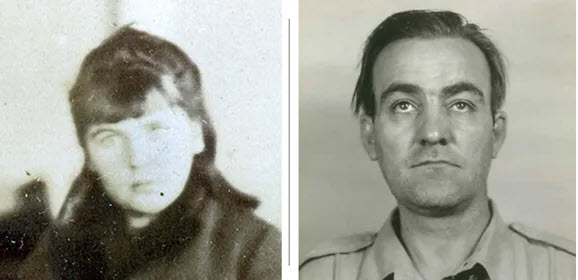
Annie Moore and Arne Pareli Pettersen, first and last through Ellis Island, seen together for the first time
Annie Moore and Arne Pettersen were Ellis Island’s bookends. An Irish teenager, Annie was the first to arrive when the immigration processing center opened its doors on January 1, 1892. 62 years later on November 12, 1954, Norwegian seaman Arne would be the last to depart. Both experienced a fleeting moment of fame before falling through the cracks of history for decades to come.

Annie Moore and her brothers (colorized)
Annie re-emerged in the late-1980s in conjunction with the re-opening of Ellis Island as a museum site, but working on a PBS documentary in 2002, I discovered that the Annie being touted had been born in Illinois rather than Ireland. That was the easy part. Finding Ellis Island’s true Annie Moore would take me another four years.
Now that Annie’s story was known, it was only natural that I would turn my attention to Arne. Had he become an American citizen? Did he return to Norway? Maybe he settled elsewhere or died at sea. I had to know what happened to him.
But like Annie, he was evasive — at least in part for the same reason: his name was so common, especially when you considered all the potential spellings (Pettersen, Petersen, Petterson, Peterson, etc.). Time after time, I scoured both online and offline resources, but came up empty or uncertain. Until now. Years later, Ellis Island’s last has finally surrendered his secrets.
Arne’s Departure
Over time, Ellis Island’s raison d’être evolved from processing immigrants to detaining them. As a seaman, Arne had journeyed to and from America six or seven times by his own estimate, but in 1954 he overstayed his shore leave. Non-immigrant crewmen were allowed to remain in the U.S. for up to 29 days, but by the time a warrant for his arrest was signed, he had been here six months. Officers Trief and Harri arrested him in Brooklyn and sent him to Ellis Island. At his hearing, he applied for the privilege of voluntary departure, saying that this was the first time he had stayed longer than permitted and he would ship out shortly (spoiler alert: neither was true).
Arne was granted parole to leave on his own within a designated time period, and this was the moment when he was captured for posterity waving as he left Ellis Island. Newspapers across the country featured his image. Most identified him as hailing from Narvik, Norway (he was from Larvik, and it didn’t help that there is indeed a city called Narvik as well) and claimed that he was “paroled to an unidentified friend who will sponsor his citizenship” (not so). Spellings in the assorted articles varied and included Petterson, Peterssen, and even one that had it correct.
What Really Happened
So what became of Arne after his turn in the spotlight? He returned to Norway — eventually.
At the hearing associated with the closing of Ellis Island, he was given until December 10th to remove himself by signing on to another ship (the expression “self-deport” comes to mind). This didn’t work out, so he sought a two-week extension to December 24th. His request was granted, but by February of 1955, he was still here, making it necessary to re-apprehend him. This time, he was denied the opportunity for voluntary departure, and on February 16, 1955, Arne was finally deported on the M.S. Stockholm.
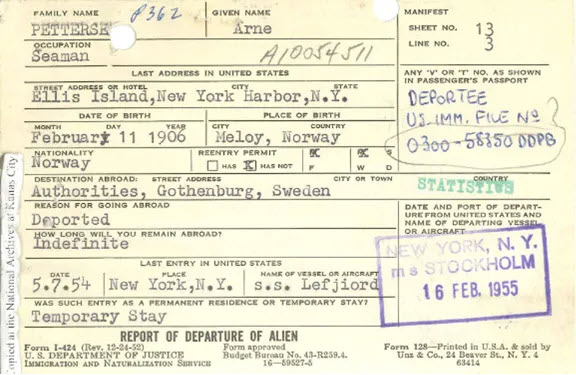
Departure of Alien for Arne Pettersen (Alien Case File, National Archives, Kansas City)
Dates recorded in his paperwork made it easy to determine that he was the same fellow from the newspaper accounts, but any lingering doubts were removed by a note in his case file that stated: “This is the alien that got all the publicity — TV etc., as the last detainee released from the Island when it closed last November.”
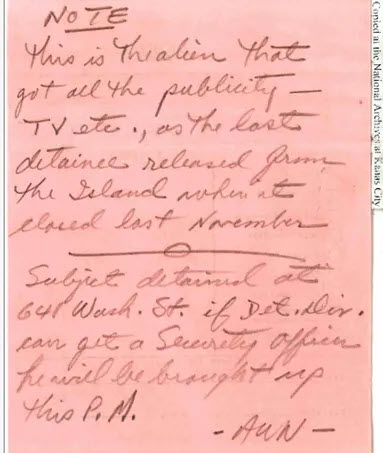
Note in Arne Pettersen’s Alien Case File (National Archives, Kansas City)
Not a First Timer
This same file revealed that this was not the first chapter of Arne’s misadventures with immigration officials in America.

Claim of first overstay (National Archives, Kansas City)
Though he professed at his November 1954 hearing that he had “been a seaman for the past 30 years and this is the first time I have ever overstayed my shore leave,” it turned out he had a short memory. Arne had done the exact same thing in December 1953.
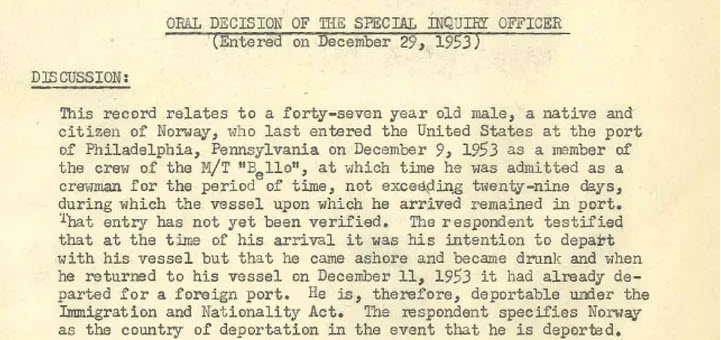
Oral Decision of the Special Inquiry Officer (National Archives, Kansas City)
In this previous instance, he testified that he had intended to remain with the ship he arrived on, but came ashore and missed the boat because he was drunk. But even this wasn’t his first flirtation with deportation. Before getting to that, though, let’s rewind to his early years.
Pre-Ellis Island
Arne Pareli Pettersen was born to Albert Angel Karl Pettersen and Olianna Margrethe Nilsdotter in Meløy, Norway on February 11, 1902. This exact date of birth (along with its reversed month and day version of November 2nd) would prove helpful in narrowing the field of candidates with similar names.

Baptism of Arne Pareli Pettersen (The National Archives of Norway)
One of four children, he was a bit of an afterthought, being six years younger than his next eldest sibling. When he was only 17 months old, life dealt him a blow with the death of his mother. His father swiftly remarried resulting in a pair of younger sisters for Arne. The family moved steadily south down Norway’s western coast from Meløy to Bindal and finally to Åkra where he would eventually lose both his father and stepmother when he was 25.
Aside from this, his early years are hazy. Although it’s reasonable to assume that he was a seafarer from a young age, he claimed in various depositions to have first come to America in 1929, 1930 and 1940, providing a bit of a fuzzy target. Assuming 1929 is the correct date, an arrival record that fits well with him provides the only specific details of the tattoos on his arms that would be mentioned a number of times in other documents: “lady flag right, ship left arm.”
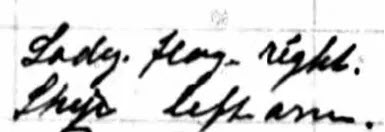
Description of tattoos from 1929 arrival record (Ancestry)
Other physical descriptions of him put him in the 5’9”-5’11” range and anywhere from 150 to 175 pounds (lighter as he aged). His eyes were brown and his hair would morph from brown to grey over time.
In 1938, he married Petra Margrethe Olafsen with whom he would have one son (now deceased). Like many who spent a large portion of their lives at sea, it’s possible that he had mixed feelings about being a family man, as just a half dozen years later, he would declare that he was single with no children. By the 1950s, though, he readily acknowledged his wife and son.

1938 marriage (The National Archives of Norway)
Wartime Service
Shortly after this this spell of domesticity, it’s much easier to pick up Arne’s trail thanks to Krigsseilerregisteret, a register of Norwegian seafarers during World War II (1939–1945). This invaluable resource logs Arne’s 15 wartime engagements noting ships, dates, and locations. From this, it’s clear that he spent most of the war at sea with journeys lasting from one week to ten months.
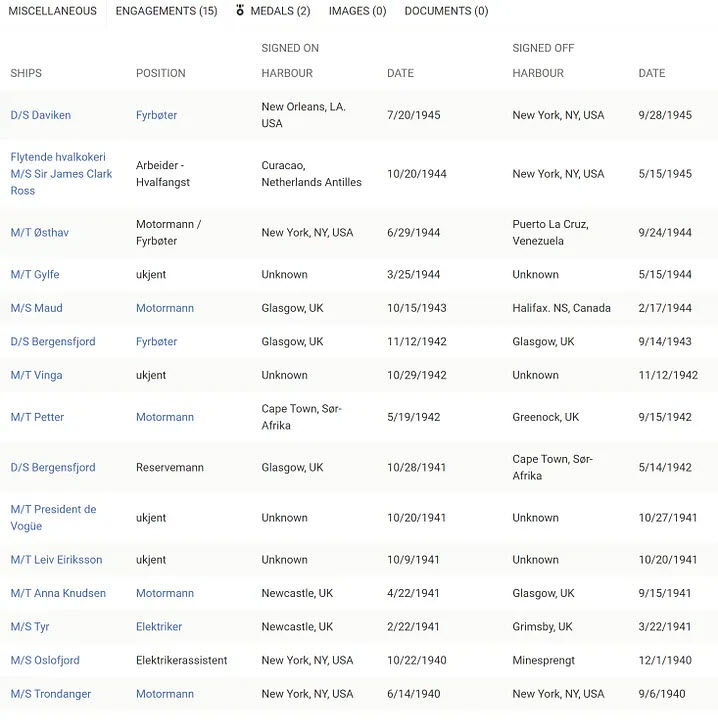
Arne’s wartime engagements (Krigsseilerregisteret)
Equipped with the information provided in this database, it’s also possible to dovetail his movements with his sporadic appearances in the U.S. For instance, on October 16, 1940, he was in Brooklyn, so was recorded in America’s WWII draft registration.
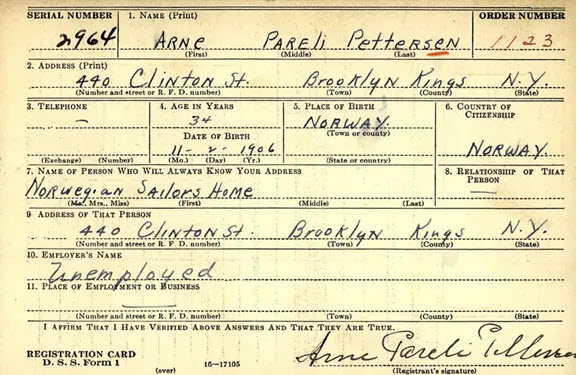
WWII Draft Registration Card (Ancestry)
Checking this date against the Norwegian seaman register reveals that he had arrived in New York almost six weeks earlier on September 6th. This duration meant that he had overstayed his shore leave, though there’s no indication he was ever investigated for it. Perhaps a concern that this paper trail could put him on the American government’s radar or the prospect of being drafted into U.S. military service motivated him to clear out. Regardless, he joined the crew of the M/S Oslofjord as an assistant electrician on the 22nd, but soon had reason to wish he hadn’t.
Krigsseilerregisteret notes that the ship was “minesprengt” on December 1st. A quick google search shows that the Oslofjord hit a mine “in the North Sea off the coast of England off the River Tyne.” For unclear reasons, it didn’t sink until three weeks later and the wreck remains underwater until this day.
At this point, Arne began a series of shorter engagements mostly to and from Newcastle and Glasgow with an occasional long haul such as the time he ventured to South Africa in 1941–1942. In late 1943, he mixed things up by signing on for a trip to Halifax in Nova Scotia, Canada. From there, he took a short stint on the M/T Gylfe from Halifax to New York and that’s when he had his first known rendezvous with American immigration officials.
First Immigration Encounter
Arriving on May 2, 1944, he headed once again to Brooklyn. Just as he had in 1940, he loitered and ignored the usual time restrictions, but this time, he was caught. A warrant for his arrest was executed on June 16th and he was taken to Ellis Island the same day.
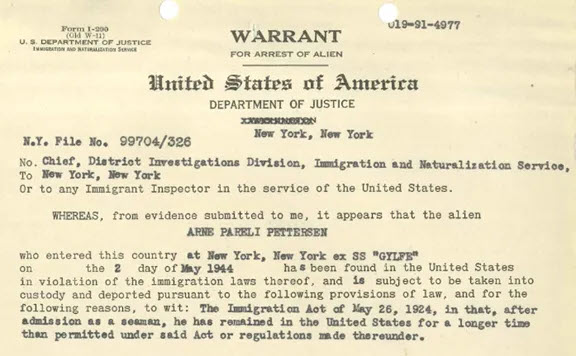
1944 warrant for arrest (National Archives, Kansas City)
It was during this investigation that Arne claimed to be single and childless. Perhaps he had been away from home for so long that it felt that way to him or maybe he thought providing these details would complicate matters. He had also failed to register under the terms of the Alien Registration Act of 1940 (aka Smith Act) for the simple reason that he wasn’t aware of it. As a result, he was fingerprinted.

claim of having no wife or children (National Archives, Kansas City)
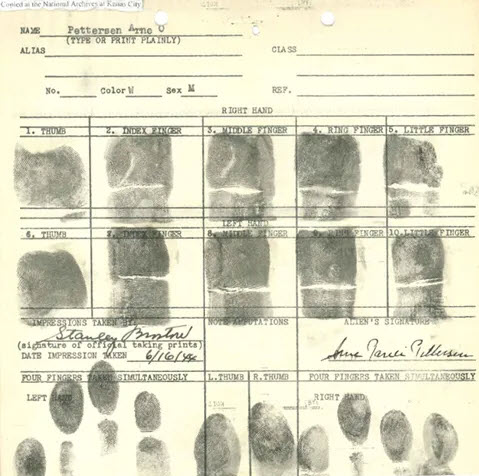
Fingerprints taken in 1944 (National Archives, Kansas City)
Arne stated that he was willing to re-ship, but this was somewhat contradicted by exchanges with the Norwegian Consulate which explained that he was supposed to have left on a ship called the Balla in early June, but had deserted. Even so, he was allowed to sign up with the M/T Østhav on June 29th, but not before leaving a valuable souvenir — his photo. In all likelihood, the last time someone laid eyes on this image was when his file was closed in 1955.
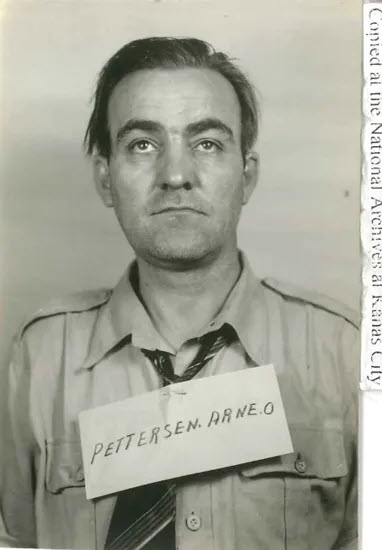
1944 photo of Arne Pettersen
This mug shot style photo mistakenly identifies him as Arne O. Pettersen, but a search of arrivals in the U.S. found no other such man and comparison to his future 1954 departure image makes it apparent that this is a younger version of the same fellow. The error seems to have stemmed from a bit of careless paperwork done when he was being fingerprinted and photographed.
Post-War
It seems that Arne had had enough excitement for a while as his remaining gigs during the war centered on the Caribbean, but he had done his bit, so was awarded a couple of medals from Norway for his service. After the war, the sea still had a claim on him and he resumed crossing the Atlantic.
Crew records show him arriving in America several more times over the latter half of the 1940s and first half of the 1950s — until the pair of 1953–1955 transgressions that ultimately led to his being the last to depart Ellis Island. After he was booted in February 1955, there’s no evidence of his returning.
After years of meandering, Arne finally settled in Larvik where he died just days after his 75th birthday on February 14, 1981. According to a Scandinavian grave site database (Slekt og Data Gravminnebasen), he was buried on the 19th at Undersbo Cemetery. His wife passed away nine years later.
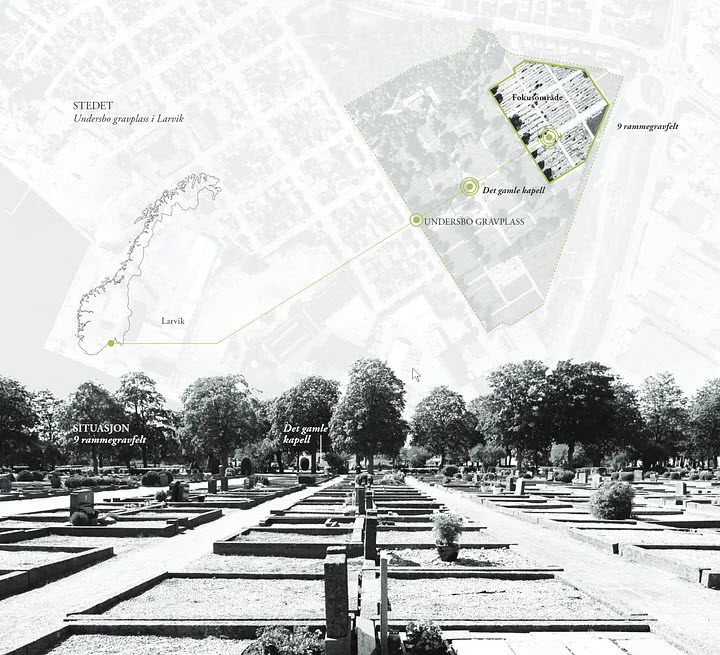
Undersbo Cemetery in Larvik, Norway where Arne Pareli Pettersen is buried
All told, Arne overstayed his welcome at least four times — 1940, 1944, 1953 and 1954. It’s hard to say why. Maybe he wanted to become American, maybe he was careless with dates, or maybe he had a girlfriend in Brooklyn. We’ll probably never know. But 66 years after his last-at-Ellis Island adventure and almost four decades after his death, we do at least know what became of him. Just as he waved farewell to Ellis Island, we can finally bid adieu to the mystery of the Norwegian seaman.

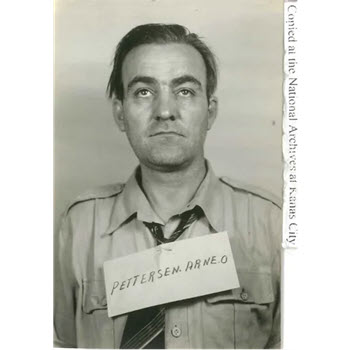
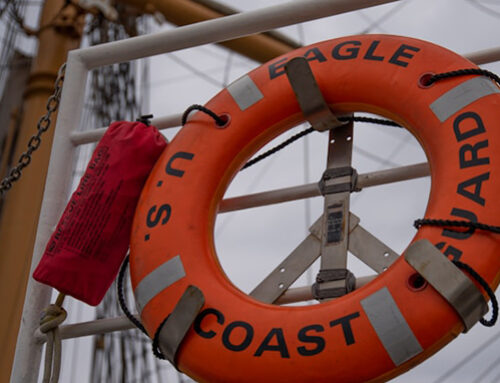



Leave A Comment